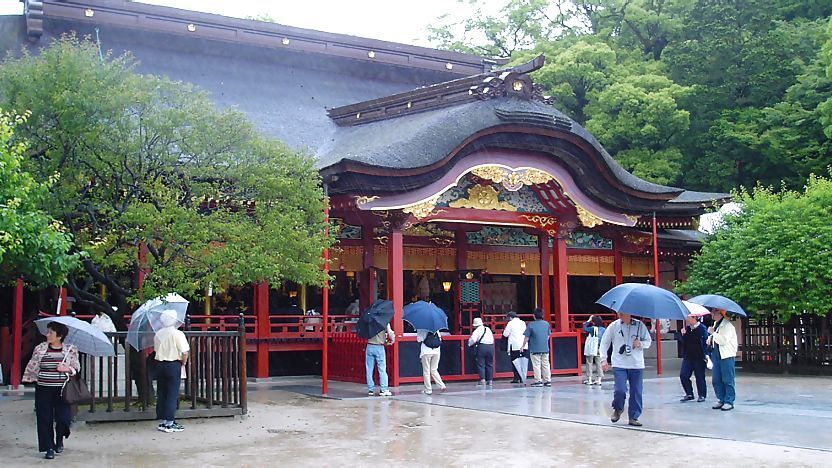Rainy Season (Tsuyu)

In early summer, most parts of Japan get visited by a rainy season, the so called tsuyu (ö~ēJ, also pronounced baiu), literally meaning "plum rain", because it coincides with the season of plums ripening. It is caused by the collision of cold northerly and warm southerly air masses, which results in a relatively stable bad weather front over the Japanese archipelago.
In most of Japan, the rainy season lasts from the beginning of June to mid July, while it affects the islands of Okinawa about one month earlier. Only Japan's northernmost main island of Hokkaido and the Ogasawara Islands get less affected by the rainy season.
The following table shows the average starting and ending dates of the rainy season for selected regions of Japan, according to the Japan Meteorological Agency:
| Region |
|
|
| Okinawa |
|
|
| Southern Kyushu |
|
|
| Shikoku |
|
|
| Kansai (incl. Kyoto) |
|
|
| Kanto (incl. Tokyo) |
|
|
| Northern Tohoku |
|
|
During the rainy season it does not rain every day. For example, the probability of rain on a given day in Tokyo is 45% during the peak of the rainy season, while the probability of sunny weather is 27%. Of the rainy days, half see only light rain, while the other half see more considerable amounts of precipitation.
Due to the bad weather, the rainy season is not the most suitable season for visiting Japan compared to other times of the year, even though it can have its advantages, too. For example, travel activity is rather low during June, which clears many popular outdoor attractions from the many visitors that are usually present.
Furthermore, some sights can be attractive in rain, especially some temples, gardens and hot springs. All you need to enjoy them in the rain is the right attitude and rain protection. Below are just a few sights that can be very attractive during the rainy season:
Questions? Ask in our forum.







